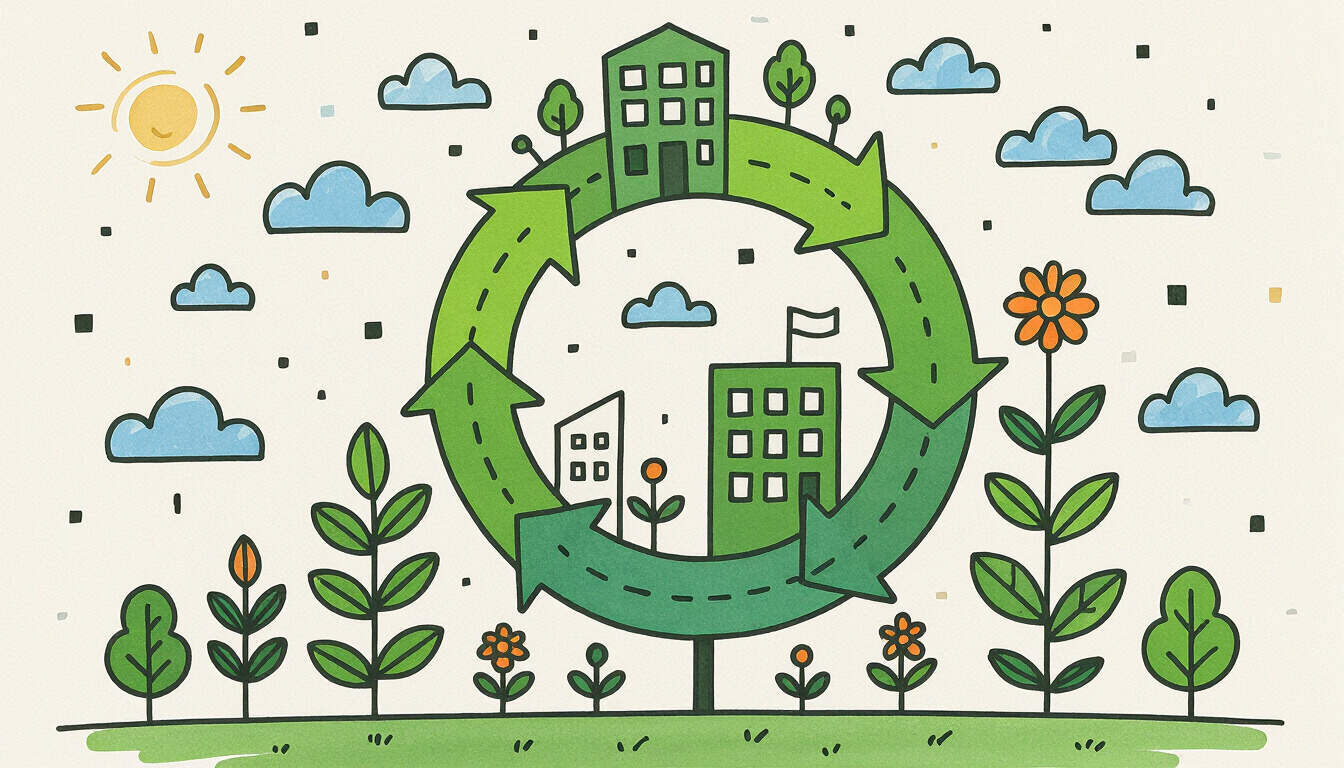Exponential Feedback Cycles and Green Building Standards
 by Max Miller
by Max Miller
Green building standards promote sustainability through practices that reduce environmental impact. These standards create feedback cycles accelerating innovation in technology, business efficiency, and personal skills, leading to ongoing improvements and growth in eco-friendly practices.

Green building standards focus on creating structures that minimize environmental harm while maximizing efficiency. These standards include energy-efficient designs and use of sustainable materials, which set the stage for exponential feedback cycles.
In technology, green building standards drive advancements that reinforce themselves. For instance, implementing smart systems in buildings leads to better data collection on energy use. This data then informs further improvements, creating a cycle where each enhancement builds on the previous one. Exponential feedback cycles in this area mean that initial investments in green tech yield data that speeds up innovation.
Consider how sensors in buildings monitor and adjust energy consumption. Over time, the insights from these systems allow for refinements that reduce waste even more. As a result, the buildings become more efficient, which in turn generates more data for future upgrades. This process illustrates how green building standards foster continuous technological progress.
Moving to business, adopting green building standards can lead to cost savings that fuel further development. Companies that build or retrofit properties to meet these standards often see reduced operational expenses due to lower energy bills. These savings can be reinvested into more projects, amplifying benefits over time.
In one example, a business reduces its carbon footprint through better insulation and renewable energy sources. The financial gains from these changes enable the company to expand its sustainable initiatives. Through this, exponential feedback cycles help businesses grow while maintaining environmental responsibility.
Business leaders find that employees in green-certified buildings report higher satisfaction and productivity. This improvement can lead to better performance, which supports the company's overall success and encourages more green investments. Thus, the cycle continues, with business growth tied directly to sustainable practices.
On the personal level, engaging with green building standards offers opportunities for skill development. Individuals working in this field, such as architects or engineers, gain expertise in sustainable methods that enhance their careers. As they apply these skills, they encounter new challenges that prompt further learning.
For example, a professional might start by learning about eco-friendly materials for a project. Successfully completing the project provides experience that leads to more complex roles. Over time, this personal growth contributes to broader industry advancements, forming exponential feedback cycles in professional development.
People involved in green building often become advocates for sustainability in their communities. Their experiences inspire others to adopt similar practices, creating a ripple effect. This shows how individual efforts in green standards can multiply through shared knowledge and actions.
To explore these cycles further, consider the role of certification programs like LEED or BREEAM. These frameworks encourage ongoing improvements by setting benchmarks that buildings must meet. Once achieved, the certifications open doors to new opportunities, such as partnerships or funding, which drive more innovation.
In technology sectors, integrating green standards with digital tools creates systems that self-optimize. For instance, AI-driven building management learns from past data to predict and adjust for efficiency. This not only saves resources but also generates more accurate predictions, enhancing the system iteratively.
Businesses benefit from this by attracting eco-conscious consumers and investors. As demand for green properties increases, companies that lead in this area see their market position strengthen. This success prompts them to invest more in sustainable technologies, perpetuating the cycle.
For personal development, participating in green building projects builds a sense of accomplishment and purpose. Individuals develop problem-solving skills and adaptability, which are valuable in many areas of life. As they progress, their enhanced capabilities allow them to take on larger responsibilities, fostering long-term growth.
Overall, green building standards serve as a catalyst for positive change across various fields. By initiating cycles that build upon themselves, they promote a future where sustainability and progress go hand in hand. Whether in technology, business, or personal spheres, the impacts of these standards continue to expand, offering pathways for ongoing improvement and innovation.
Key Benefits in Technology
- Improved energy efficiency through data-driven adjustments
- Faster innovation cycles from real-time feedback
- Integration of renewable sources for long-term gains
Strategies for Business Implementation
- Initial investments in green upgrades for cost reductions
- Employee training to maximize productivity in sustainable environments
- Expansion plans based on proven financial returns
Steps for Personal Growth
- Pursue education in sustainable practices
- Apply skills in real-world projects for hands-on experience
- Network with professionals to share insights and opportunities
